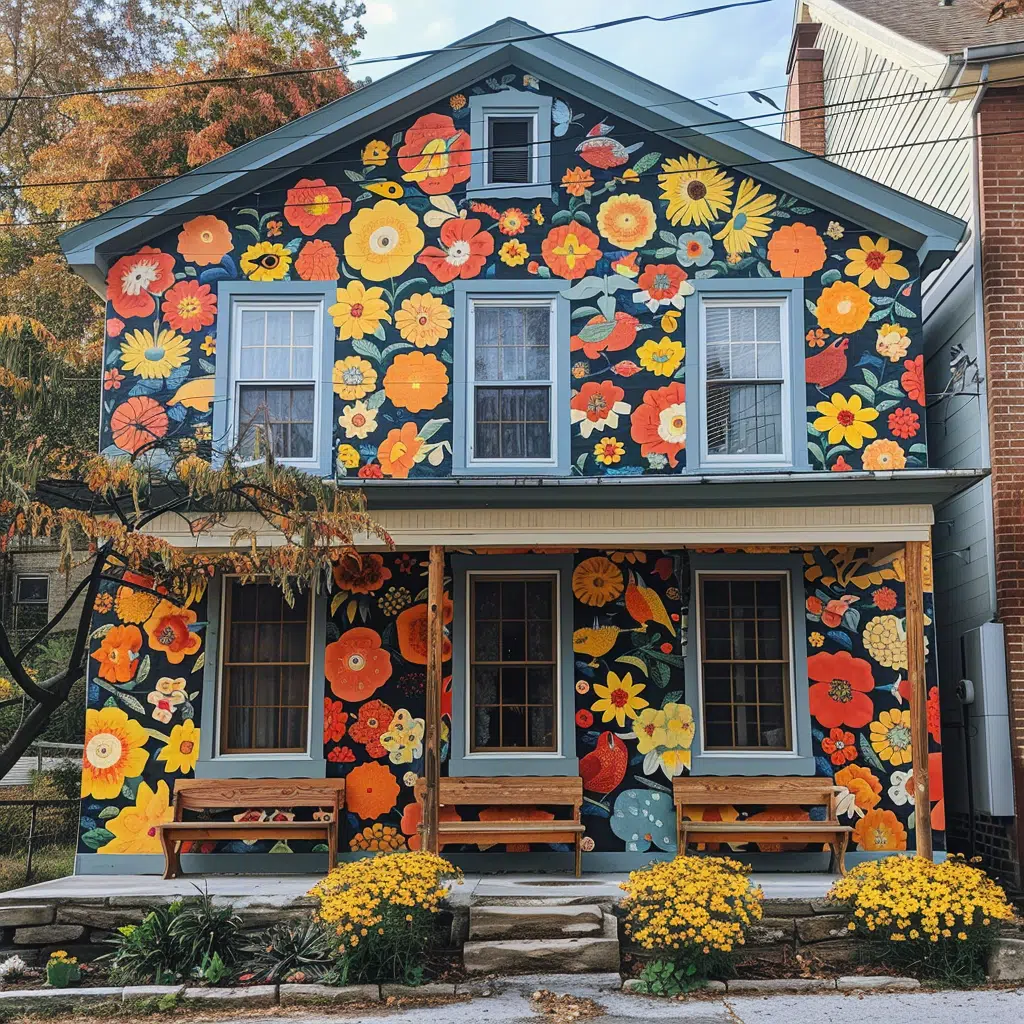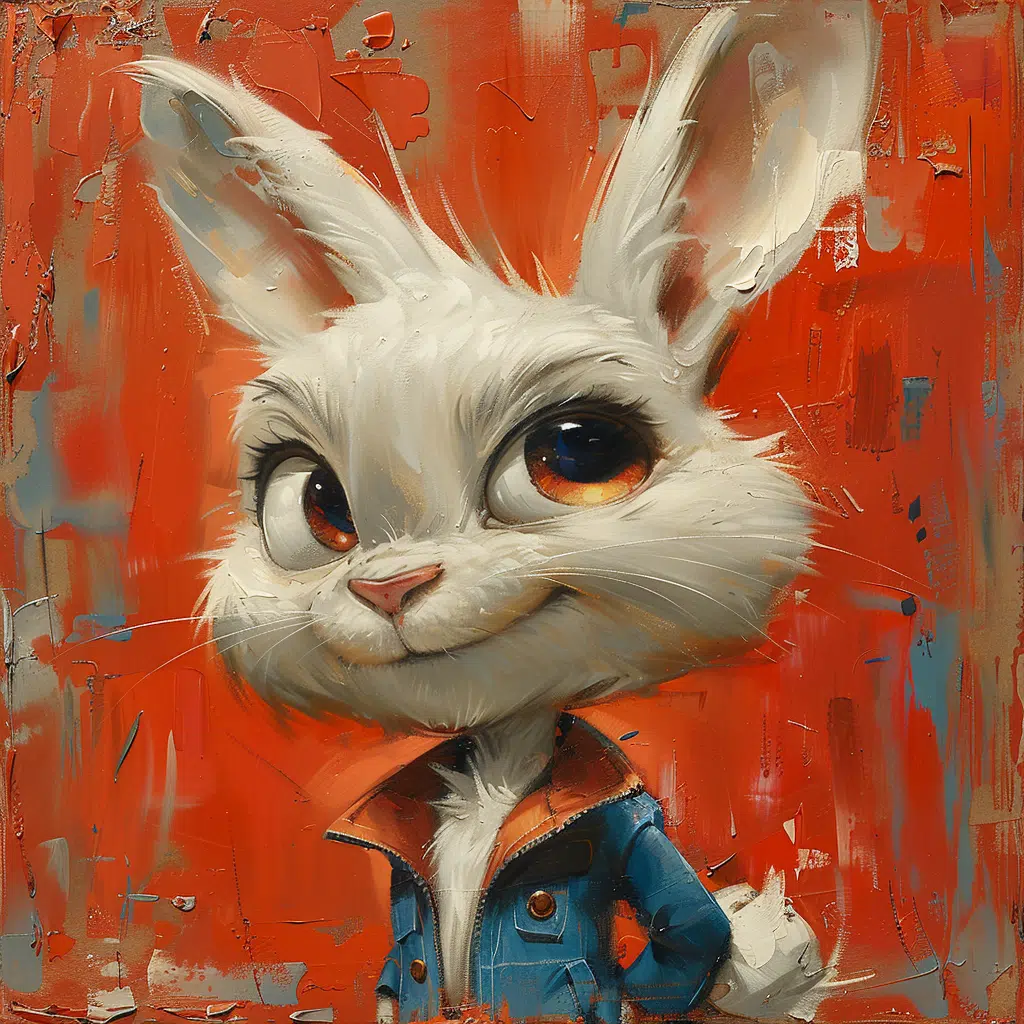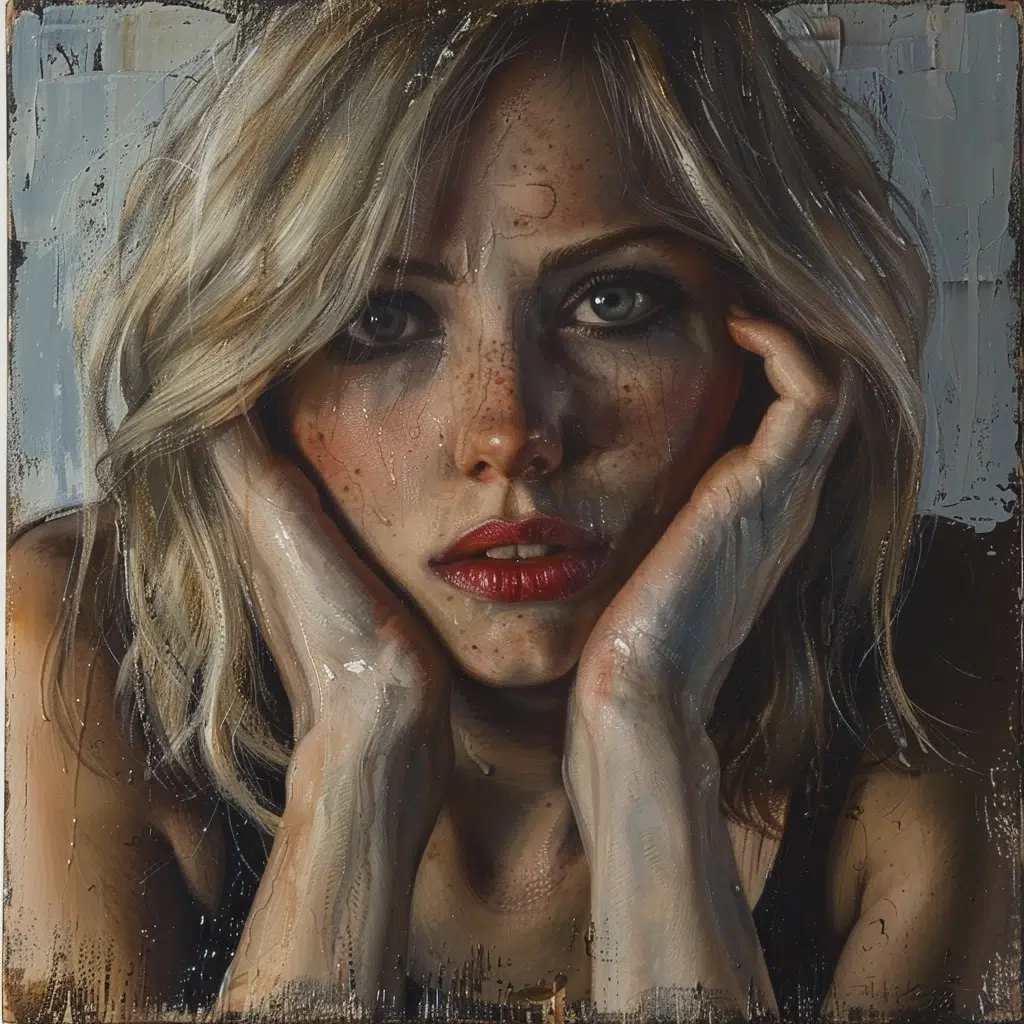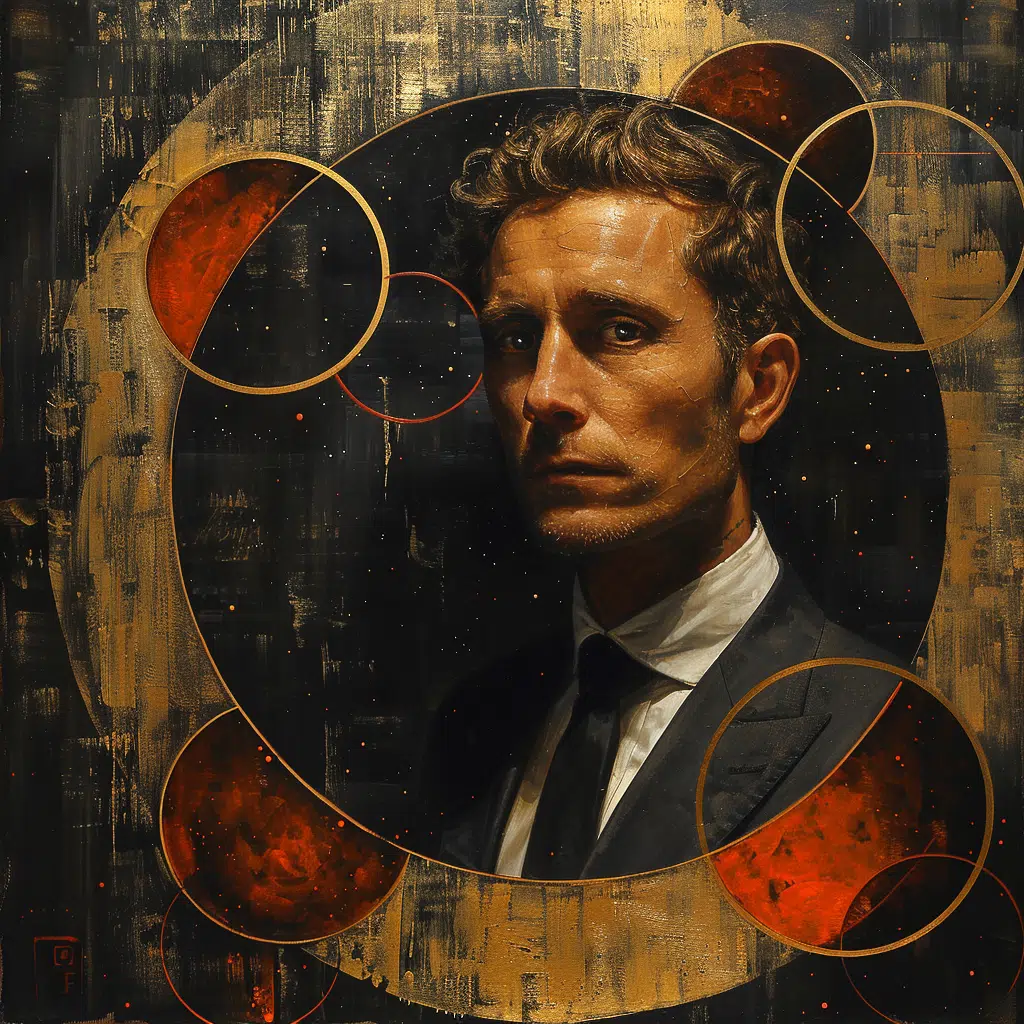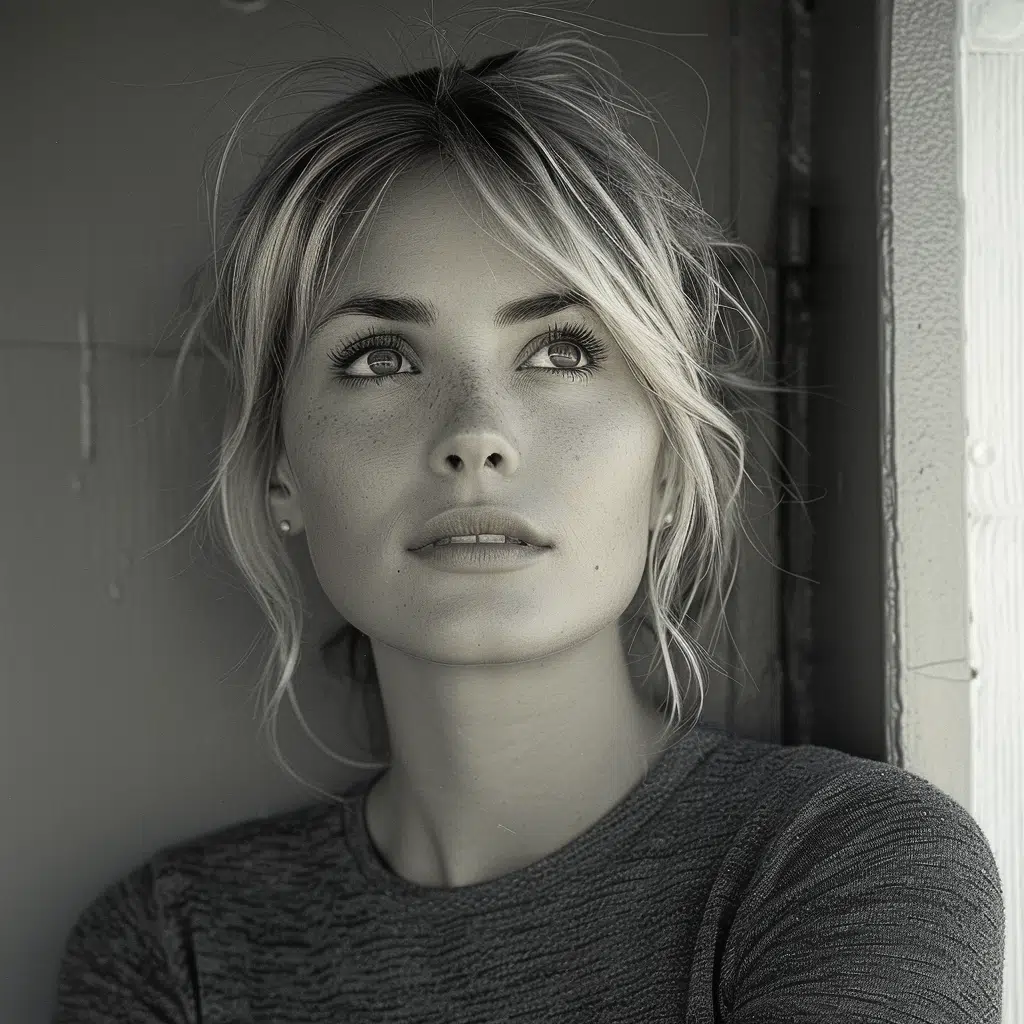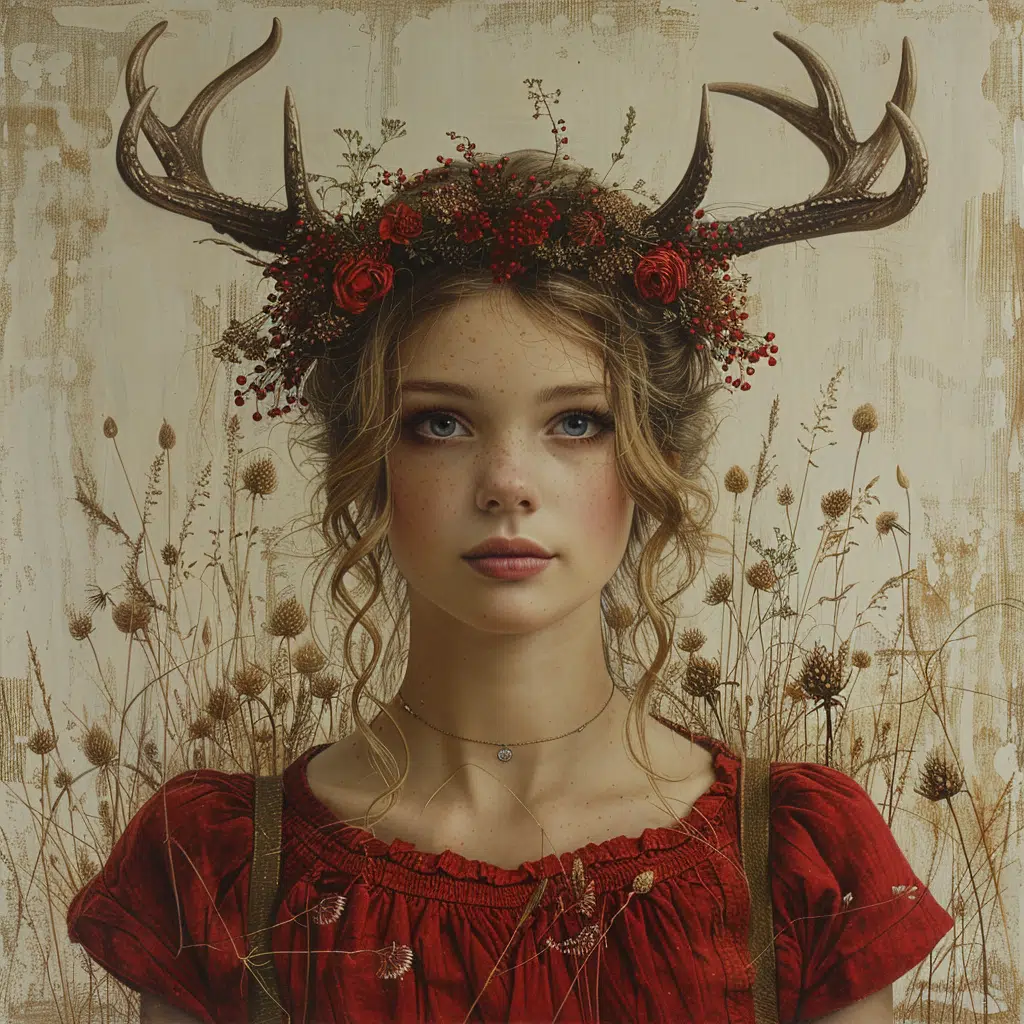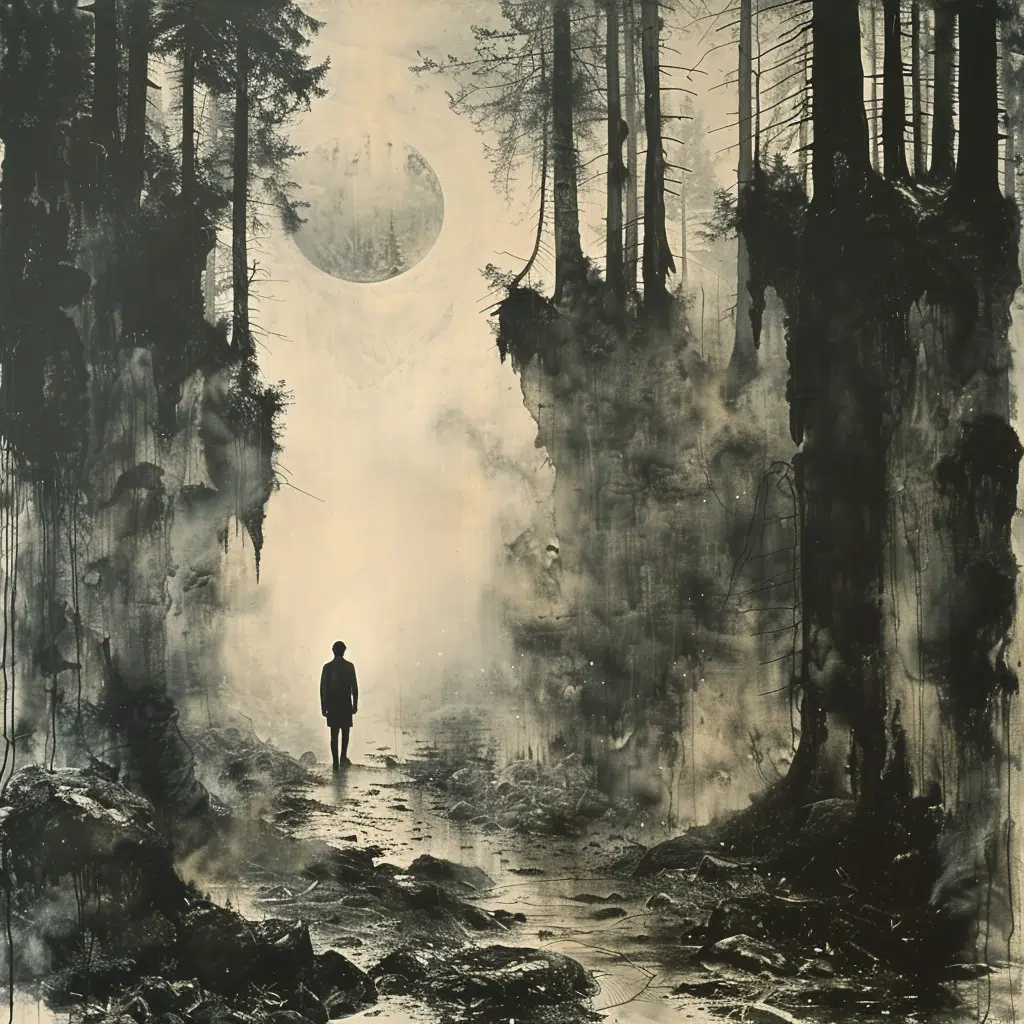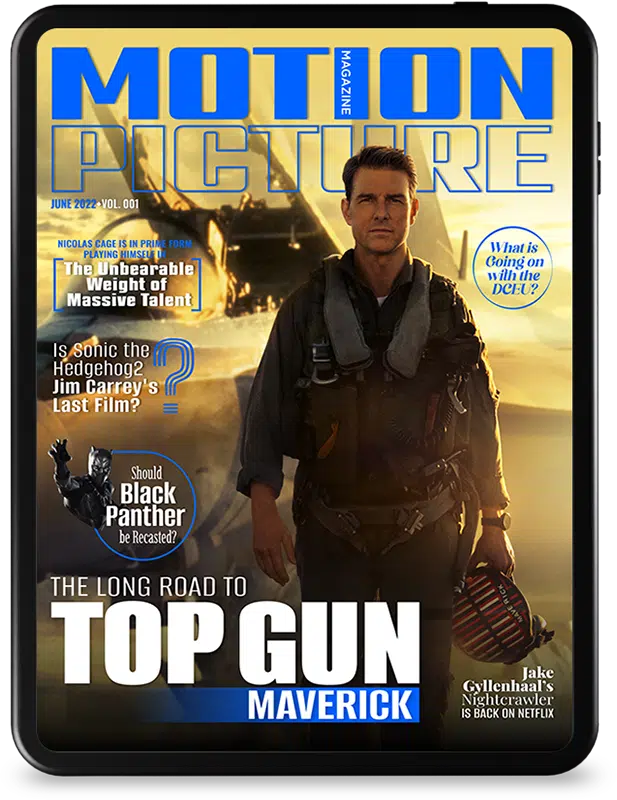In the immersive world of cinema, escapism has often been a prized ticket for audiences globally. Yet, a palpable shift has been brewing beneath the screens—a magnetic pull towards the stark, unadorned, and often uncomfortable terrains of the human psyche and societal underbelly. We’re voyaging beyond the sheltered harbors into the choppy seas of uncomfort, where the absence of solace is both the subject and the sentiment. This exploration is not for the faint of heart, but for those yearning to confront the uncomfortable truths tangoing in the shadows of the silver screen.
Embracing Uncomfort: The Rise of Gritty Narratives in Cinema
The sheen of Hollywood narratives has been dulled, replaced with a raw, grittier patina that feels more akin to the true human condition. We witness this stark reality through the lens of Steve McQueen’s “12 Years a Slave,” where the horrors of slavery are not only depicted but felt, stitched into our consciousness with each frame. Gillian Flynn’s “Gone Girl” ties us in knots with its piercing portrayal of domestic unease, leading us through a thorny maze of marital falsehoods and media manipulation. These stories are steeped in the uncomfort that writhes within the human soul, the kind that leaves you squirming in your seat, eyes glued, heart racing.
The Why Behind the Wince
What propels directors and writers to these storytelling cliffs? The push seems to be a craving for authenticity, a mirror that reflects society as is, not as we might wish it to be. This is the uncomfort that resonates, that nudges us closer to our own frailties and the world’s sharp corners. It’s this same uncomfort that, when done right, crafts characters who breathe, bleed, and break like we do—characters like Furiosa in “Mad Max: Fury Road” or Andrew Neiman in “Whiplash”, where the grime and the glory are inseparable, and palpably real.
Art Mirroring Life’s Jagged Edges
Films that tackle topics from gender inequality to systemic corruption align uncomfortably close to daily headlines. It’s this unfiltered exploration, where a story like “Joker” can dance down a stairwell of societal neglect and mental health stigma, that cements uncomfort as a crucible for truth. When met with uncomfort, the veneer peels, the candy-coating melts, and what’s left is the raw bite of reality.
The Uncomfort of Ambiguity in Fictional Endings
As the credits roll, the hunger for resolution gnaws at us. Yet, there’s a growing taste for the bittersweet—the uncomfort that lingers when a story leaves loose threads to dangle in our minds. David Chase’s “The Sopranos” and Christopher Nolan’s “Inception” serve as masterclasses in the art of the unresolved. These narratives echo life’s own inclination towards the unfinished, propelling uncomfort to a place of narrative virtue.
Refusing the Neat Bow
The suspect silence at the end of “The Sopranos” mirrors our own, often unvoiced, uncertainties. Do we not also drift in seas of the unknown, seeking anchors in the form of definitive ends? Yet, reality resists, and so must our stories. When Cobb’s totem spins precariously in “Inception,” we lean in, yearning for certainty that never comes. We’re gripped, and it is exactly the grip of uncomfort that presses us closer to the nuanced truths of life.
The Viewer’s Psyche Under the Microscope
Our brains are wired for patterns, for conclusions, but it is when these threads are left hanging that we are thrown into the deep end of thought. We engage, we debate, we search for meaning within the uncomfort. Ambiguity becomes a canvas for our projections, and uncomfortably so, it becomes a mirror to our individual and collective psyches.
| Aspect of Uncomfort | Potential Causes | Manifestations | Responses | Mitigation Strategies |
| Physical Discomfort | Poor ergonomics, illness, injury | Pain, tenderness | Adjusting posture, wincing | Ergonomic furniture, pain medication |
| Emotional Discomfort | Social anxiety, grief, embarrassment | Anxiety, sadness | Withdrawal, crying | Counseling, support groups |
| Environmental Discomfort | Extreme temperatures, noise, poor lighting | Shivering, squinting | Seeking quieter/brighter areas | Climate control, noise-canceling headphones |
| Psychological Discomfort | Stress, cognitive dissonance, overstimulation | Restlessness, frustration | Fidgeting, escapism | Mindfulness, therapy, breaks |
| Social Discomfort | Prejudice, awkward situations | Embarrassment, unease | Avoidance, appeasement | Conflict resolution, assertiveness training |
| Material Discomfort | Itchy fabrics, tight clothing | Scratching, adjusting | Changing clothing | Choosing comfortable materials |
| Financial Discomfort | Debt, insecurity | Worry, stress | Budgeting, seeking advice | Financial planning, debt counseling |
| Comfortlessness (General) | Lack of physical/emotional ease | General malaise | Seeking comfort activities | Self-care, relaxation techniques |
Portraits of Mental Health: Uncomfort as a Tool for Awareness
From the labyrinthine mindscapes of “Euphoria” to the animated existential tragi-comedy of “Bojack Horseman”, mental health is no longer a silent specter on screen. Instead, it stands center stage, painted with the bold strokes of uncomfort—a tool not to exploit but to expose.
The Tightrope of Authentic Portrayal
Through these platforms, we are given a telescope into the psyche, and it’s an uneasy gaze. The polarity of Rue’s highs and lows in “Euphoria” and Bojack’s self-destructive carousel illustrate the gravity of uncomfort in these human (and anthropomorphic) experiences. Here lies the potential for empathy, born from the uncomfort we share, yet a perilous edge resides nearby—where the genuine can slip into glorification, where the vivid can blur into voyeuristic.
Beyond the Screen, Into the Mind
These shows, in being unflinching, demand that we too, do not flinch away from mental health’s raw and often uncomfortable truth. The viewer becomes an accomplice to the character’s journey, a silent sentinel to their spirals and stumbles, and it is here, in this shared space of uncomfort, that awareness can bloom. The harshness is a harness that draws us together, fostering understanding within the collective uncomfort.
Uncomfort and Societal Critique: The Role of Satire and Dark Comedy
Satire slices through societal tapestries with the piercing clarity of a needle, and dark comedy stitches humor into the wounds of our collective consciousness. Jordan Peele’s “Get Out” and Bong Joon-ho’s “Parasite” are exemplary needlework, pricking at the fabric of class and race with sharp comedic hooks.
Uncomfort Laughing With a Purpose
These tales prod at our insecurities and societal scars, coaxing out a laugh that often catches in the throat—an uncomfortable chuckle that speaks volumes. They dare us to diagnosticate our societal ills with uncomfort as the scalpel. “Get Out” unravels the strings of liberal racism with gripping precision, while “Parasite” exposes the gaping class divide with darkly comedic incisions.
Satire’s Mirror: Reflecting the Absurdities
Like a constellation tattoo on the body politic, satire and dark comedy create patterns that offer guidance and insight, reflecting an uncomforting truth back to its audience. With incisive wit and an unyielding handle on uncomfort, these filmmakers navigate the dark waters of discord, guiding us through laughter and wincing in equal measure.
The Documentary Dilemma: Facing Uncomfort through Real-world Stories
Real-world narratives betray an uncomfort far deeper than fiction. “Making a Murderer” and “The Social Dilemma” present raw, unfiltered glimpses into the intricate webs of injustice and digital manipulation, raising questions heavier than the cameras that captured them.
The Ethical Quandary in Storytelling
In documenting the uncomfortably true, a conundrum unfurls before both filmmaker and viewer—how do we gaze upon reality’s face without altering it? The magnetic pull of these real stories comes paired with the weighty responsibility of capturing truth without succumbing to sensationalism, of wielding uncomfort with care and conscience.
The Line Between Awareness and Exploitation
It is a fine line that documentaries tread, balancing the critical need to inform against the temptation to entertain. The discomfort lies in this tension, a space where ethical boundaries must be respected even as intrigue and awareness are pursued.
The Viewer’s Role in the Documentary Experience
In this exchange, the audience is not merely a passive recipient but an active witness, implicated in the ethical and narrative encounter. Through uncomfort, we’re nudged to reassess our perceptions and responsibilities within the narratives that unfold before our eyes.
Visual Uncomfort: The Role of Cinematography and Set Design
Cinematography and set design serve as the canvases upon which the hues of uncomfort are painted. Productions like “The Lighthouse” and “Room” showcase the potency of visual storytelling in forging an uncomfortable viewer experience.
The Disorienting Language of Cinematography
“The Lighthouse” with its chiaroscuro lighting and claustrophic aspect ratio, drags us into the tumultuous minds of its characters. Each frame disorients, the discomfort vivid as the sea-spray, as we are left grasping for the comfort of stable ground.
Set Design: Crafting Uncomfortable Spaces
In “Room,” we share the suffocating confines of captivity, the set itself a character that conveys the tangible uncomfort of forced proximity and stunted horizons. The set becomes an extension of the narrative uncomfort, enveloping us in the physical and emotional constraints of the characters.
Immersion through Sensory Response
Through meticulous craft, cinematographers and set designers invoke visceral responses. The discomfort transcends the visual, tapping into our primal instincts and emotional echoes, rendering uncomfort not just observed but felt.
Conclusion: The Uncomfortable Conclusion – What Lies Beyond the Edge of the Screen
As we navigate the densely woven paths of uncomfort in media, our journey reveals a landscape rich with raw, unsettling, and indeed, uncomfortable truths. These narratives do not exist solely to unsettle but to echo the uncomfortable aspects of reality that demand acknowledgment, conversation, and change.
This emergent narrative bravery reflects not a trend but an evolution, suggesting that we, as audiences, are yearning for more than distraction. These stories of uncomfort propose a covenant with the viewer—one that values authenticity over escapism, reflection over reception, and growth over comfort. In the dissonance of discomfort, there blooms a profound connection to our world and to each other—a remarkable testament to the power of narrative to move, to mold, and to manifest change, long after the screen fades to black.
The Raw Edges of ‘Uncomfort’: A Deep-Dive into Stark Realities
In our latest issue, we’re peeling back the curtains to reveal the harsh truths within the realm of ‘uncomfort’. Buckle up, folks, because it’s going to be a bumpy ride through the gritty side of the art and entertainment world, and just maybe, a glimpse into the underbelly of society itself.
A Harrowing Journey into the Womb of Darkness
Well, ain’t this a kick in the teeth—first up on our ‘uncomfort’ parade is the enigmatic concept some folks might be unacquainted with—the Unbirth. Even the bravest souls might squirm at this artistic exploration, a narrative that plunges you into a world turned topsy-turvy where the natural order of life rewinds before your eyes. It’s an edge-of-your-seat, fold-yourself-into-the-fetal-position kind of phenomenon that’s garnered a cult following, as unsettling as it might be.
When Investments Unveil the Grimmer Side of Coin
Would you believe if I told you that even precious metals have a stint in the ‘uncomfort’ limelight? Oh, you better believe it. When you’re trading with the likes of Apmex, you’re not just dealing with shiny bits of gold and silver. No siree, you’re treading along the cliff’s edge of market volatility. It’s a world where fortunes are made and lost faster than a coin toss, and let’s just say it’s not for the faint of heart.
Not All Anime Adventures Are Created Equal
Speaking of heartbeats, have you ever wandered down the rabbit hole of ugly bastard hentai’? Now, there’s a phrase I never thought I’d write down. It’s a subgenre that makes even seasoned anime fans blush or balk with its controversial characters and themes. To many, it’s an ‘uncomfort’ on steroids—a true testament to “beauty in the eye of the beholder” gone rogue. The medium pushes boundary after boundary, but somehow, it piques the curiosity of those looking to challenge their palette.
The Beacon in the Dark
Sometimes, to see the light, you gotta push through some serious ‘uncomfort’. That’s where places like compassion church wichita falls shine like a lighthouse in a storm. They see the gritty, they see the grime, but they also see the humans underneath it all. It’s about lending a hand, offering a shoulder, and saying “Hey, I see you, no judgment”. Where addiction strips humanity bare, this haven stitches it right back up.
Unconventional Picks for the Gamers Out There
Here’s a curveball for ya—while most folks are chasing down best Games on switch like it’s a Sunday at the mall, we’ve unearthed games that stray from your cookie-cutter Mario romps. Some titles dive deep into the ‘uncomfort’ zone, inviting players to explore narratives that are as challenging intellectually as they are emotionally. It’s the kind of games that linger, echo in your noggin like a song with no end.
A Fragrance That’s Not Just a Whiff, But a Statement
Imagine walking into a room, and the air is different, intense, almost confrontational. That’s creed cologne for ya—known for its bold scents that don’t just enter a space; they claim it. It’s an ‘uncomfort’ for the olfactory senses, a fragrance that doesn’t aim to please but to be remembered, for better or worse.
The Joy and Grief of the Imperfect Anti-Hero
And before you scoot off, let’s chat about the ‘ugly bastard’. Not the insult—mind you—but the character trope that’s been turning heads and stomachs. This archetype reels in a mix of empathy and revulsion, a character so flawlessly flawed, so perfectly ‘uncomfort’, that you just can’t help but be drawn to the human imperfection it represents.
So there you have it—five slivers of ‘uncomfort’ we bet you didn’t see coming. It’s the artful, the metallic, the animated, the spiritual, the playful, and the whiffs of reality all plated up for your pondering pleasure. Take it or leave it, but know this: ‘uncomfort’ sure makes for one heck of a conversation starter.
What is the difference between uncomfort and discomfort?
– Well, folks, when we talk about uncomfort versus discomfort, we’re really splitting hairs over gloom. To put it simply, uncomfort is all about a lack of cozy vibes—think miserableness and downheartedness. Discomfort, on the other hand, is like a tiny ache or irritation. Imagine sitting on a prickly couch during a movie marathon—that’s discomfort for ya!
What is the meaning of uncomfortability?
– Uncomfortability, you ask? It’s as dreary as it sounds—basically, it’s the state of not feeling at ease. Picture wearing a wool sweater in a heatwave—that itchy, too-hot sensation is pure uncomfortability.
What is the prefix of uncomfort?
– Gotcha scratching your head for the prefix of uncomfort? Easy-peasy—it’s ‘un-‘, which turns the whole comfort thing on its head, meaning “not comfortable.” So when you’re in an ‘uncomfortable’ spot, you’re definitely not chilling out!
Is it feeling uncomfortable or discomfort?
– Ah, the old “feeling uncomfortable or discomfort” riddle, right? Well, they’re two peas in a pod, but here’s the scoop: feeling uncomfortable is the personal sensation of not being relaxed, while discomfort is the noun that names that squirmy feeling.
What is a synonym for uncomfort?
– On the hunt for a synonym for uncomfort? You’re in luck—it’s a tie between gloominess and miserableness. Talk about being as welcome as a skunk at a picnic!
What is the opposite of uncomfort?
– If uncomfort is a cloud hanging over your head, then comfort is the sunshine breaking through! It’s the exact opposite—like comparing a cozy bed to a bed of nails!
How do you overcome Uncomfortability?
– Overcoming uncomfortability is like dancing in the rain—it might be tricky, but it’s all about finding your rhythm. Try seeking out what makes you feel relaxed, throw in a dash of self-care, and voila! You’re on your way to shaking off those uneasy vibes.
What is a synonym for uncomfortably?
– If you’re fishing for a synonym for uncomfortably, try uneasily or awkwardly. It’s the adverbial cousin of sitting on pins and needles!
What type of word is uncomfortably?
– Now, what type of word is uncomfortably? It’s an adverb, friends—the belle of the grammar ball that spices up verbs and adds that extra oomph to how we do things.
What is the prefix for egregious?
– Looking for the prefix for egregious? “E-” is the culprit—it’s like a flashing neon sign that turns anything it touches into a glaringly bad affair.
What is the prefix for disgust?
– The prefix for disgust would be “dis-“, put that little rascal in front of a word, and you’re earmarking it with a big ol’ negative stamp.
What is the prefix of ubiquitous?
– For ubiquitous, the prefix is “ubiq-“, a little less familiar but meaning “everywhere” or “all over the place.” Like finding popcorn in every nook and cranny after movie night!
What emotions make you uncomfortable?
– The emotions that can send us into a tailspin of uncomfort are fear, anger, and embarrassment—like the unholy trinity of uneasy vibes. Watch out for them; they can jump out like a jack-in-the-box!
What are the three types of discomfort?
– The three not-so-merry musketeers of discomfort are physical, emotional, and psychological. It’s like carrying a backpack filled with bricks, worries, and overthinking—all at the same time!
Is it OK to feel uncomfortable?
– Is it OK to feel uncomfortable? You betcha! It’s as normal as forgetting where you put your keys. Sometimes, it’s even a sign you’re about to grow or learn something new. So, embrace that odd sock feeling every now and then!
Is there a difference between uneasy and uncomfortable?
– When we weigh uneasy against uncomfortable, they’re as close as two coats of paint, but here’s the scoop: uneasy is more about a sense of worry or anxiety, while uncomfortable is that fidget-in-your-seat, general lack of ease.
What are the three types of discomfort?
– Didn’t we just go down this road? The three amigos of discomfort are still physical, emotional, and psychological, but remember, they sure don’t travel light!
What is the difference between discomfort and discontent?
– Discomfort versus discontent? Well, discomfort is the nagging shoe that won’t stop pinching, while discontent is deep-down dissatisfaction—an itch you can’t quite scratch.
What is the difference between comfort and discomfort?
– Comfort versus discomfort is like night and day, folks. Comfort is when you’re snug as a bug in a rug, and discomfort is when you just can’t get those ducks in a row. It’s the difference between a sigh of relief and a groan of annoyance!



